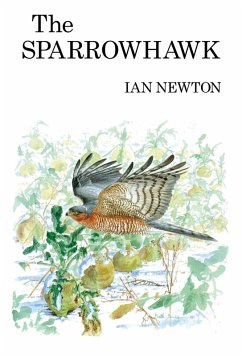Dr Newton is now a senior ornithologist with the Natural Environment Research Council and the book draws on his wide knowledge of the Sparrowhawk, as well as that of other workers in Britain and abroad.
The text gives a detailed account of all aspects of the Sparrowhawk's lifestyle, population levels and trends, and the impact of man and environment on the species in recent times.
The book also has the benefit of Dr Newton's particular interest in population regulation and breeding performance, and in the remarkable contrast in size between the Sparrowhawk sexes (males being half the weight of females), which means that they diverge, almost as separate species, in habitat preference, diet and in response to circumstance.
The narrative is fully supported by diagrams, tables and photographs, and is embellished by Keith Brockie's evocative and accomplished drawings.
The text gives a detailed account of all aspects of the Sparrowhawk's lifestyle, population levels and trends, and the impact of man and environment on the species in recent times.
The book also has the benefit of Dr Newton's particular interest in population regulation and breeding performance, and in the remarkable contrast in size between the Sparrowhawk sexes (males being half the weight of females), which means that they diverge, almost as separate species, in habitat preference, diet and in response to circumstance.
The narrative is fully supported by diagrams, tables and photographs, and is embellished by Keith Brockie's evocative and accomplished drawings.
Dieser Download kann aus rechtlichen Gründen nur mit Rechnungsadresse in A, B, BG, CY, CZ, D, DK, EW, E, FIN, F, GR, HR, H, IRL, I, LT, L, LR, M, NL, PL, P, R, S, SLO, SK ausgeliefert werden.

